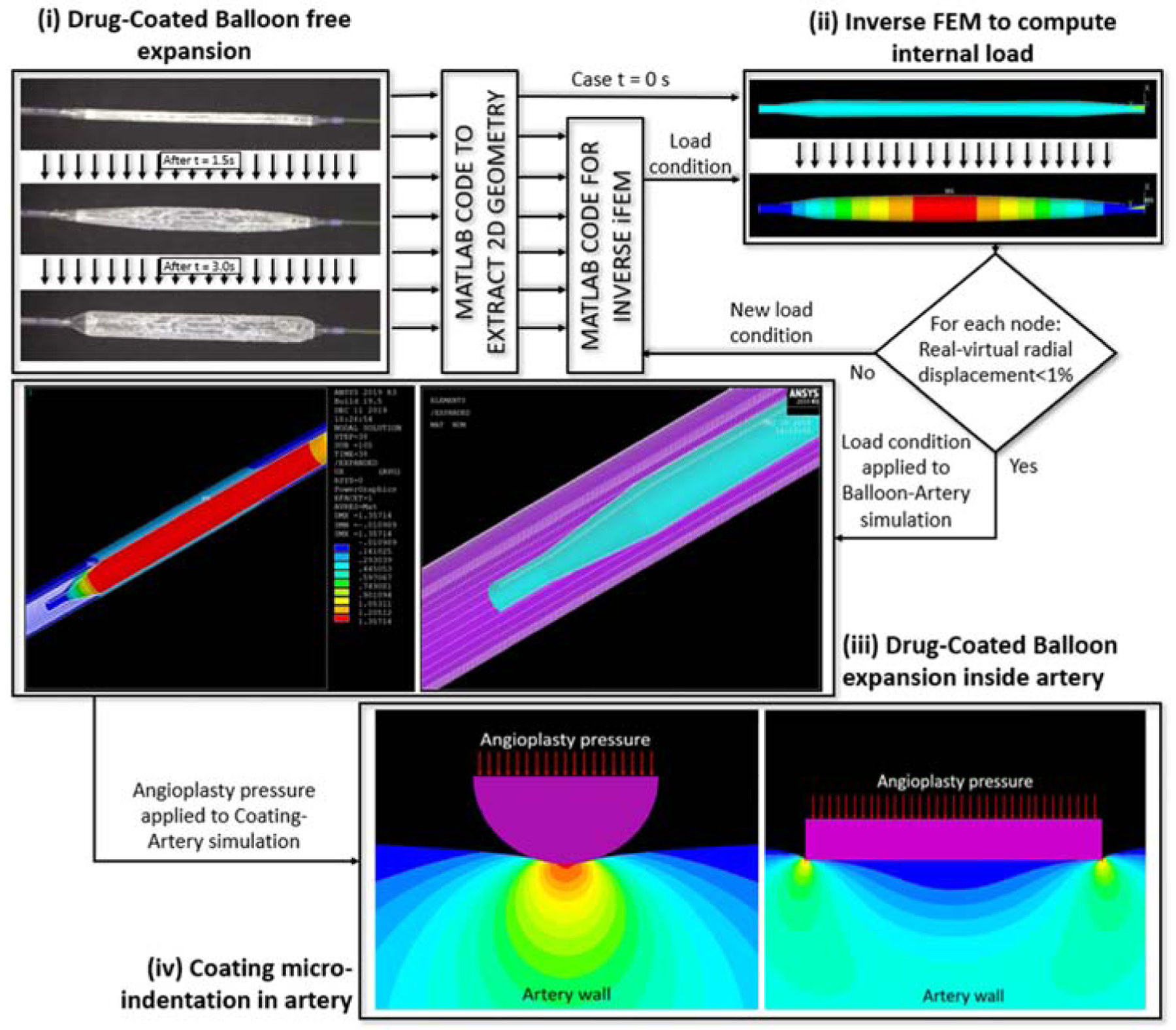Figure 1.

Computational prediction of angioplasty and microindentation pressure distributions. (i) Time series images (3 s) of a freely expanding IN.PACT PCB were used to calculate the internal pressure distribution in (ii) by applying an inverse finite element method (iFEM) to the balloon outline extracted from images (ii, top). The estimated internal pressure distribution was then used to (iii) model PCB expansion within a perfectly cylindrical hyperelastic artery. (iii, right) One-half symmetry expansion of the initial mesh of the balloon based on computed images (blue) and idealized artery model (purple). (iii, left) Radial displacement achieved after full balloon expansion within the artery. The computed radial angioplasty pressure was imposed at the balloon-coating interface to compute steady- state tissue microindentation strains (iv). Full details are provided in the Supplemental Appendix.
